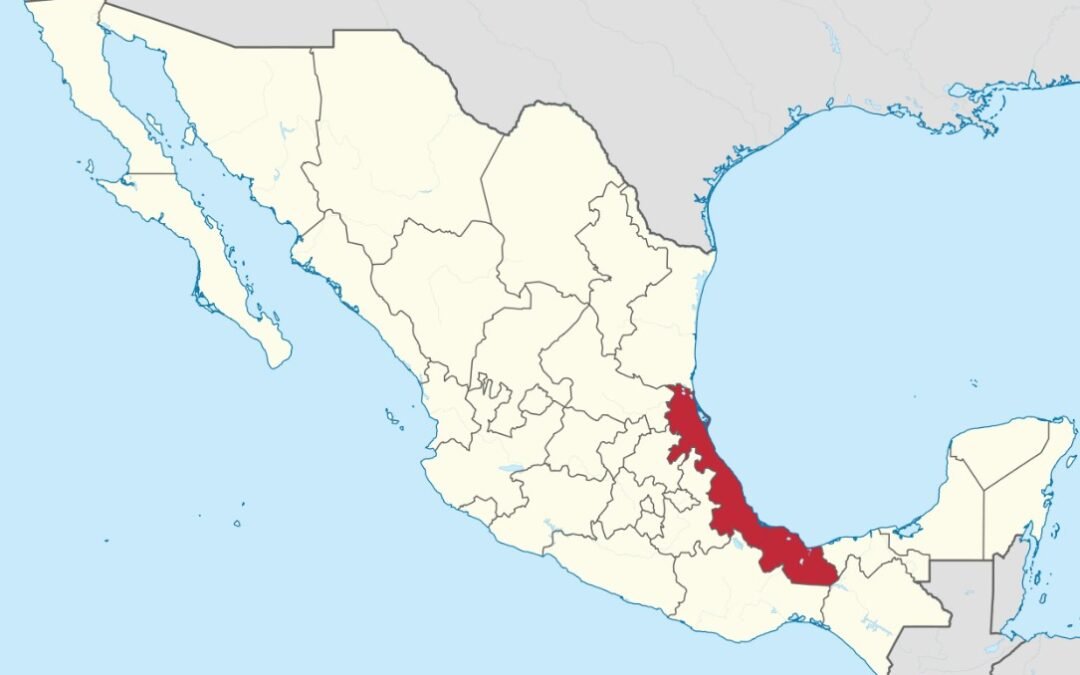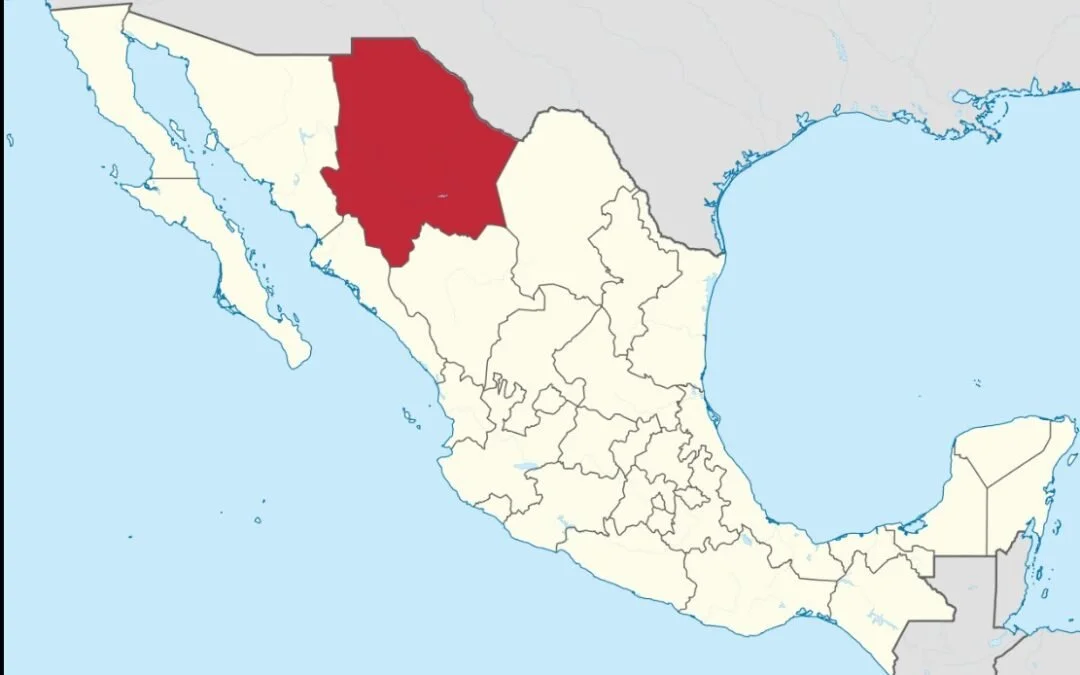
Articles

Mexican States
Southwest United States
Heritage and Governance
Indigenous Nueva Galicia: The Native Peoples of Jalisco and Zacatecas
Established in 1548, the Spanish province of Nueva Galicia embraced 180,000 kilometers and included most of present-day Jalisco, Nayarit, Aguascalientes and Zacatecas. Across this broad range of territory a wide array of indigenous groups lived during the Sixteenth Century. The old Aztec empire had been replaced with Nueva España.
Indigenous Oaxaca and the Census
Oaxaca is characterized by extreme geographic fragmentation with extensive mountain systems, wide tropical coastal plains and fertile valleys. The entire state is very mountainous, being crossed by three cordilleras:
1. The Sierra Madre Oriental in western Oaxaca.
2. The Sierra Madre del Sur covers 70% of the state territory.
3. The Sierra Atravesada in the region of the Isthmus of Tehuantepec.
Searching for Your Indigenous California Ancestors
It is believed that as many as 300,000 American Indians spoke at least 80 distinct languages in California at the time of the Spanish arrival. The map on this page shows the California tribal groups at the time of the Spanish arrival in the Eighteenth Century.
Tracing Your Indigenous Roots in Northeast Mexico and Texas
Learn to trace your indigenous roots in northeastern Mexico and south Texas. Historian, genealogist, and author John P. Schmal will discuss the various tribal groups inhabiting this region; research techniques for finding your ancestors in this area; and helpful websites.
The Indigenous People of Northeastern Mexico: Past and Present
Today, in the northeast corner of Mexico, there are two Mexican states, Tamaulipas and Nuevo León. When the Spaniards arrived in this area in 16th Century, they were confronted by a large number of hostile indigenous tribes. Over time, the Coahuiltecans – the dominant linguistic group in the region – were weakened by epidemics, warfare, the Spanish encomienda, forced slavery, dispersion and general demoralization. With the Spaniards coming from the south and Apaches and Comanches attacking from the north, the Coahuiltecans declined significantly within the period of a century, many of them seeking refuge in the Spanish missions.
Divided Loyalties: The Indigenous Peoples Who Occupy the US-Mexico Borderlands
This presentation discusses the native groups that occupied the regions adjacent to and on both sides of the U.S.-Mexico border over the last three centuries. While some of these tribes are well-known to us today (i.e., the Yaquis, Tohono O'odham, Kumeyaay, etc.), tribal groups that have nearly disappeared as distinguishable cultural entities (i.e., Carrizos, Mansos, Jocome, Coahuiltecans, etc.) will also be discussed. In addition to the history of those tribes, we will explore the current status of some of the tribal communities that still exist today.
Indigenous Hidalgo and the Census
From 1895 to 2015, the Mexican census has painted a picture of Mexico’s people, providing details about languages spoken (Spanish, foreign and indigenous), religion, education, literacy, employment and migration. From the beginning, the Mexican census provided details about indigenous languages spoken by its citizens. However, in the first half century, it is possible that there were undercounts of indigenous language speakers because some may have failed to declare their language status for fear of affecting their position within the community. In addition, poor communications channels with rural, isolated indigenous communities may also have caused an undercount of the indigenous people.
Indigenous Chiapas and the Census
From 1895 to 2015, the Mexican census has painted a picture of Mexico’s people, providing details about languages spoken (Spanish, foreign and indigenous), religion, education, literacy, employment and migration. From the beginning, the Mexican census provided details about indigenous languages spoken by its citizens. However, in the first half century, it is possible that there were undercounts of indigenous language speakers because some may have failed to declare their language status for fear of affecting their position within the community. In addition, poor communications channels with rural, isolated indigenous communities may also have caused an undercount of the indigenous people.
Exploring Jalisco’s Indigenous People: Past and Present
Today, Jalisco is the seventh largest state of Mexico with a diverse terrain that gave rise to an incredible diversity of tribal groups. Professor Eric Van Young has noted that the area of central Jalisco “supported relatively dense populations” and a “considerable ethnolinguistic variety prevailed within a fairly small geographic area.” But the expedition of Nuño de Guzmán (1529-1531) changed everything and many tribal groups were decimated during the next two decades, especially after the Mixtón Revolt (1540-1541).
Indigenous Tamaulipas: The Seno Mexicano and Nuevo Santander
The state of Tamaulipas is located in the northeastern portion of the Mexican Republic. It shares common borders with the Mexican States of Nuevo León (to the west), San Luis Potosí (to the southwest) and Veracruz (to the south). It also shares its northern boundary with Texas. On its east, Tamaulipas also has a 458-kilometer long coastline along the Gulf of Mexico.
Indigenous Tamaulipas: Ancestors of the Tejanos
The State of Tamaulipas once boasted a very large number of indigenous groups. Most of the region was largely unexplored and unexploited until the middle of the 18th Century when Jose de Escandón established the colony of Nuevo Santander. Although Gabriel Saldivar’s “Los Indios de Tamaulipas” (1943) references four primary indigenous groups within the borders of the present-day state, the Coahuiltecans made up the bulk of the northern bands along the Rio Grande River. However, with Spaniards coming from the south and Apaches and Comanches attacking from the north, the Coahuiltecans declined significantly within the period of a century, many of them seeking refuge in the Spanish missions
The Indigenous Groups Along the Lower Rio Grande
The American state of Texas and the Mexican state of Tamaulipas share a long border along the Rio Grande River. For thousands of years, Native American tribes either lived along this river or passed over it on their way south (or north). This boundary was finalized in 1848, but a century earlier, much of the Rio Grande River area was being settled by Spanish and Mexican settlers who had come from other parts of Mexico to settle the lands that were already inhabited by many tribal groups.
Indigenous Puebla and the Census
From 1895 to 2015, the Mexican census has painted a picture of Mexico’s people, providing details about languages spoken (Spanish, foreign and indigenous), religion, education, literacy, employment and migration. From the beginning, the Mexican census provided details about indigenous languages spoken by its citizens. However, in the first half century, it is possible that there were undercounts of indigenous language speakers because some may have failed to declare their language status for fear of affecting their position within the community. In addition, poor communication channels with rural, isolated indigenous communities may also have caused an undercount of the indigenous people.
Indigenous Veracruz and the Census
From 1895 to 2015, the Mexican census has painted a picture of Mexico’s people, providing details about languages spoken (Spanish, foreign and indigenous), religion, education, literacy, employment and migration. From the beginning, the Mexican census provided details about indigenous languages spoken by its citizens. However, in the first half century, it is possible that there were undercounts of indigenous language speakers because some may have failed to declare their language status for fear of affecting their position within the community. In addition, poor communications channels with rural, isolated indigenous communities may also have caused an undercount of the indigenous people.
Indigenous Jalisco and the Census
From 1895 to 2015, the Mexican census has painted a picture of Mexico’s people, providing details about languages spoken (Spanish, foreign and indigenous), religion, education, literacy, employment and migration. From the beginning, the Mexican census provided details about indigenous languages spoken by its citizens. However, in the first half century, it is possible that there were undercounts of indigenous language speakers because some may have failed to declare their language status for fear of affecting their position within the community. In addition, poor communications channels with rural, isolated indigenous communities may also have caused an undercount of the indigenous people.
Indigenous Michoacán and the Census
From 1895 to 2015, the Mexican census has painted a picture of Mexico´s people, providing details about languages spoken (Spanish, foreign and indigenous) religion, education, literacy, employment and migration. From the beginning, the Mexican census provided details about indigenous languages spoken by its citizens. However, in the first half century, it is possible that there were undercounts of indigenous language speakers because some may have failed to declare their language status for fear of affecting their position within the community. In addition, poor communications channels with rural, isolated indigenous, isolated indigenous communities may also have caused an undercount of indigenous people.
Indigenous San Luis Potosí and the Census
From 1895 to 2015, the Mexican census has painted a picture of Mexico’s people, providing details about languages spoken (Spanish, foreign and indigenous), religion, education, literacy, employment and migration. From the beginning, the Mexican census provided details about indigenous languages spoken by its citizens. However, in the first half century, it is possible that there were undercounts of indigenous language speakers because some may have failed to declare their language status for fear of affecting their position within the community. In addition, poor communications channels with rural, isolated indigenous communities may also have caused an undercount of the indigenous people.
Indigenous Chihuahua and the Census
From 1895 to 2015, the Mexican census has painted a picture of Mexico’s people, providing details about languages spoken (Spanish, foreign and indigenous), religion, education, literacy, employment and migration. From the beginning, the Mexican census provided details about indigenous languages spoken by its citizens. However, in the first half century, it is possible that there were undercounts of indigenous language speakers because some may have failed to declare their language status for fear of affecting their position within the community. In addition, poor communications channels with rural, isolated indigenous communities may also have caused an undercount of the indigenous people.
Indigenous Guerrero and the Census
The Mexican Census Paints a Picture
From 1895 to 2015, the Mexican census has painted a picture of Mexico’s people, providing details about languages spoken (Spanish, foreign and indigenous), religion, education, literacy, employment and migration. From the beginning, the Mexican census provided details about indigenous languages spoken by its citizens. However, in the first half century, it is possible that there were undercounts of indigenous language speakers because some may have failed to declare their language status for fear of affecting their position within the community. In addition, poor communications channels with rural, isolated indigenous communities may also have caused an undercount of the indigenous people.
Indigenous Nayarit and the Census
The State of Nayarit, located in northwestern Mexico, has an area of 27,857 square kilometers, thus taking up 1.4% of the national territory of Mexico and is the 23rd largest state. Nayarit’s 1,181,050 inhabitants occupy Nayarit’s twenty municipios but only ranks 29th among the 31 states and the Distrito Federal in terms of population. The capital of Nayarit is Tepic.

Article Categories
- Aguascalientes 10
- Arizona 4
- Baja California 5
- Baja California Sur 2
- California 14
- Campeche 5
- Census 32
- Chiapas 4
- Chihuahua 13
- Coahuila 8
- Colima 1
- Conquistador Chronicles 1
- Durango 2
- Ethnic Identity 31
- Genealogy 32
- Guanajuato 7
- Guerrero 8
- Hidalgo 2
- Indigenous Insights 91
- Jalisco 21
- Mexico City 9
- Michoacan 5
- Morelos 4
- Nayarit 3
- New Mexico 3
- Nuevo Leon 7
- Oaxaca 5
- Politics 9
- Puebla 5
- Queretaro 1
- Quintana Roo 5
- San Luis Potosi 9
- Sinaloa 5
- Sonora 16
- Southwest US 23
- State of Mexico 6
- Tabasco 4
- Tamaulipas 11
- Texas 6
- Tlaxcala 6
- Veracruz 7
- Yucatan 5
- Zacatecas 11





















